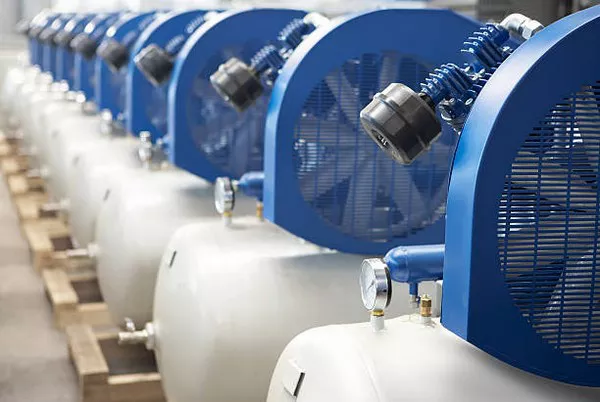Refrigeration compressors stand as indispensable components in refrigeration systems, boasting a spectrum of structures categorized into three pivotal refrigeration compressors types: hermetic, semi-hermetic, and open compressors. Each type unfolds distinctive features, advantages, and targeted applications, sculpting a tailored approach to address the array of refrigeration needs.
Hermetic Refrigeration Compressors:
In the realm of refrigeration, hermetic compressors embody a sleek and efficient design, encapsulating both the electric motor and compression unit within a solitary sealed housing. The direct refrigerant cooling amplifies efficiency, rendering these compressors not only economical but also space-efficient. Despite their prowess, hermetic compressors tend to hover around a relatively modest capacity, peaking at approximately 35 kW.
Advantages:
Economy: The amalgamation of the electric motor and compression unit streamlines manufacturing processes, concurrently curbing costs.
Compactness: By confining both elements within a single housing, hermetic compressors minimize spatial requirements, catering to applications with confined spaces.
Universality: The simplicity in design paves the way for versatile applications across diverse refrigeration systems.
Applications:
Hermetic compressors carve a niche in smaller-scale refrigeration applications, finding their stride in household refrigerators, air conditioners, and compact commercial cooling units. Their efficiency and simplicity position them as the go-to solution for scenarios where spatial constraints and cost-effectiveness reign supreme.
Semi-Hermetic Refrigeration Compressors:
Semi-hermetic compressors thread the needle between hermetic and open systems, featuring a dismountable casing housing both operational components and the electric motor. This design allows a degree of adaptability, empowering adjustments to the operating mode through selective closure of suction valves. Semi-hermetic compressors step up to the plate, boasting substantial power development of up to 350 kW.
Advantages:
High Power: Semi-hermetic compressors deliver a formidable power output, tailored for expansive refrigeration applications.
Compactness: The dismountable casing preserves compactness while streamlining maintenance and repairability.
Ease of Maintenance: A modular design facilitates hassle-free dismantling, motor removal, and part replacement.
Applications:
Semi-hermetic compressors shine in scenarios demanding a delicate equilibrium between power and adaptability. Their versatility finds expression in applications ranging from medium-sized commercial refrigeration systems to industrial cooling units. The capability to fine-tune operating modes introduces flexibility, making them adaptable to diverse refrigeration needs.
Open Refrigeration Compressors:
Open compressors boast a separate housing for the electric motor and compression unit, affording uncomplicated access to internal components. Renowned for their augmented capacity and design flexibility, open compressors excel in heavy-duty applications, offering efficient cooling and heat dissipation.
See Also: How Much Does It Cost To Replace An Ac Compressor?
Advantages:
High Capacity: Open compressors ascend to handle larger capacities, positioned as stalwarts for industrial-scale refrigeration demands.
Accessibility: The open design streamlines access to internal components, simplifying maintenance and repair procedures.
Versatility: Design flexibility empowers open compressors to adapt seamlessly to diverse refrigeration setups and configurations.
Applications:
Industrial landscapes witness the prowess of open compressors, where large-scale refrigeration emerges as a requisite. Deployed in cold storage warehouses, food processing plants, and environments with heightened refrigeration demands, open compressors stand as stalwarts of reliability.
In Conclusion:
Understanding the intricate structural tapestry of hermetic, semi-hermetic, and open refrigeration compressors becomes paramount for discerning the optimal solution tailored to specific requirements. Each type unfolds a unique suite of advantages, catering to a vast spectrum of refrigeration applications characterized by diverse scales and complexities.

